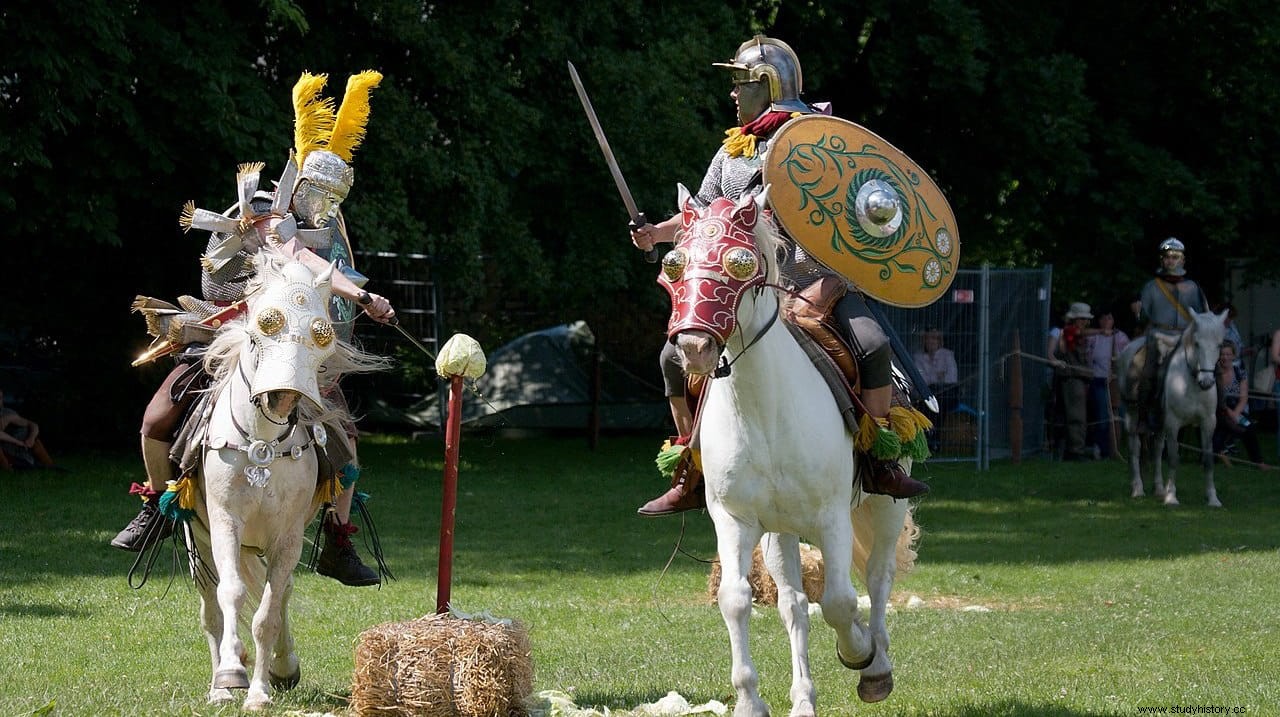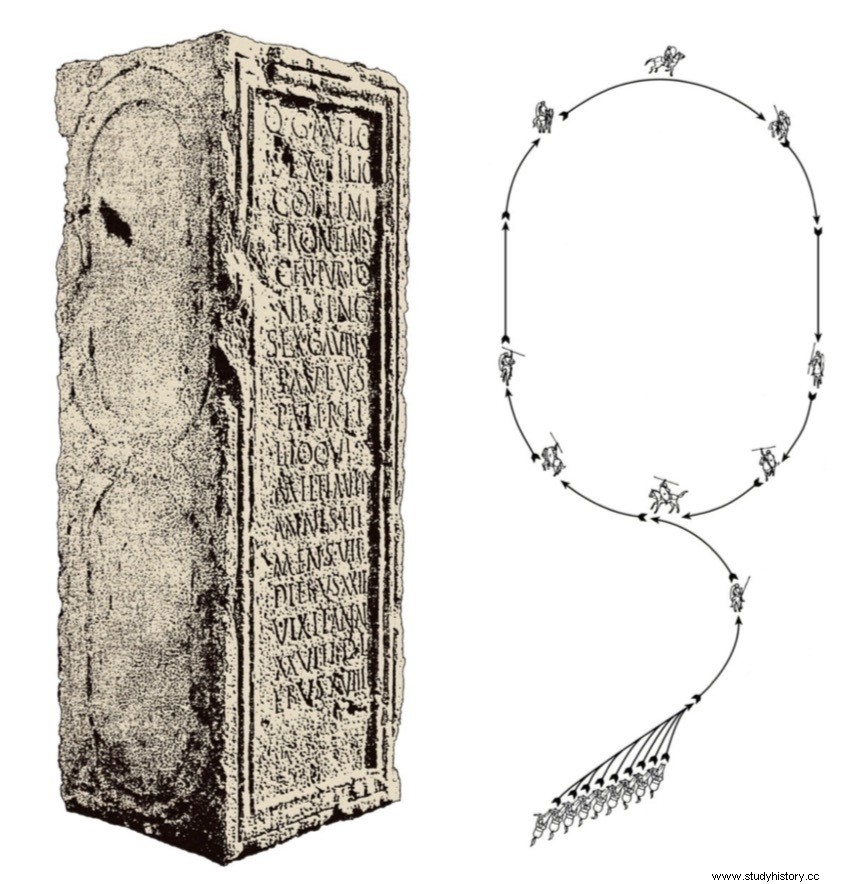We are accustomed, thanks to literature and cinema, to the image of medieval horsemen engaged in chivalric tournaments. Although this type of competition and its rules are exclusively a medieval invention, in reality similar exercises existed long before, such as the one practiced by the Roman cavalry, probably due to Greek influence.
It was called hippika gymnasia , from the Greek ἱππικὰ γυμνάσια (chivalry exercises) and, like medieval tournaments, had a component of spectacle and another of skill.
It served as a way for riders to practice their skills in combat, executing sometimes tricky maneuvers, and at the same time impressing friend and foe alike.

The Roman elite cavalry had to perform complex maneuvers that required intensive training. They were mainly part of the auxiliary troops (equites alares ), recruited from Gauls, Alemanni, Iberians and Thracians, traditionally skilled and experienced in fighting on horseback, and for this reason they were better paid than the horsemen of the cohorts (equites cohortales ).

They wore chain mail and helmets similar to those of the infantry, but with greater protection, and an oval or hexagonal shield, in addition to carrying a spear, javelin or bow and sword (spatha ), longer than the gladius and therefore designed to fight on horseback.
The role of the cavalry is profusely described by the Greek historian Flavio Arriano (h.86-175 AD) in his work Ars Tactica , where he details the practice of the hippika gymnasia . Arrian, who was consul in Baetica, proconsul of Cappadocia and commander of the legions on the border with Armenia, stood out for his tactical ability in repelling an invasion of Alans in 135 AD, a battle that he himself describes in Mobilization Plan against Alans .
The participants in the hippika gymnasia they were dressed in colorful red or violet Cimmerian robes over their armor, with helmets fitted with silver or gold masks and with long plumes and Scythian banners with brightly colored cloth tails that swelled as they rode, all in order to impress:

Archaeological excavations have recovered numerous examples of this sports equipment , such as armor, helmets and masks made of different alloys and metals, almost always decorated with reliefs and engravings of mythological figures alluding to war.
Helmets with masks are one of the most unique and curious elements. For several reasons. The first is that there were male and feminine . The latter feature elements such as headbands, jewelry, ribbons, and distinctive hairstyles. They were used to distinguish the Greeks in competition. of the amazons . And the second is that its origin is uncertain, although some authors give the eastern provinces of the empire as its place of origin.
They were also used in combat, as one appeared at the site of the Teutoburg Forest battle, where in 9 AD. Three Roman legions were annihilated. And in the Syrian site of Dura Europos, which in the year 257 AD. the Romans lost after a terrible Persian siege, horse armor appeared, which coincides with what was written by Flavio Arriano:

Despite the weapons used in the hippika gymnasia they were not lethal, since it was more than anything an exhibition in which two teams participated, one attacking and the other defending, the defenders lending themselves to receive the opponent's volleys.

Another of the usual exercises consisted of pursuing the enemy, trying by all means not to regroup.

After performing the petrinus and the toloutegon , both maneuvers characteristic of the Celts, together with the xynema or testudo (technical terms taken from the Gallic military language that kept its name within the Roman army), the teams carried out the famous maneuver of the peoples of northern Hispania called Cantabricus densus (also cantabricus impetus or cantabricus circulus ), a type of loadout that included ranged and galloping use of thrown weapons.

As explained by Eduardo Peralta Labrador in The Cantabrian auxiliaries of the Roman army and the maneuvers of the Roman cavalry the Cantabrian cargo it was a particular type of charge in which a double twist movement was executed. The most difficult was the turn to the left, which forced the horse to change its front leg while moving and the rider to continue holding the shield with his left hand, moving it to the right to protect his exposed side from the enemy. , while still throwing javelins with his right hand and defending himself from those thrown at him . Therefore, only a handful of very experienced riders were able to do it. The exercise, performed at the hippika gymnasia , consisted of obtaining a perfect synchronization between the circular progression, the rotation of the shields of the riders and the throwing of javelins .
In combat, the horsemen executed the Cantabrian charge approaching in single file and at a trot towards the enemy infantry. Once they were a few steps away, the turmas turned to the right, presenting the left flank protected by the shield and launching a large number of spears. The horsemen continued to gallop to the right, circling back to pass the enemy lines again and again until they were thrown into disarray by the attack.
The objective of all these exercises, in addition to the impressive spectacle given to dignitaries and representatives of subjugated peoples, was evidently the training of the horsemen. They were taught to ride from both sides of the horse wearing full armor and all weapons, to ride while the horse was galloping, to control the mount with only their knees and legs. The person in charge of directing the hipikka gymnasia he was called campidoctor (where the nickname Campeador comes from by Rodrigo Díaz de Vivar), and we know the names of some, such as Tito Aurelio Décimo, centurion of the Legio VII Gemina in Hispania during the reign of Commodus.
